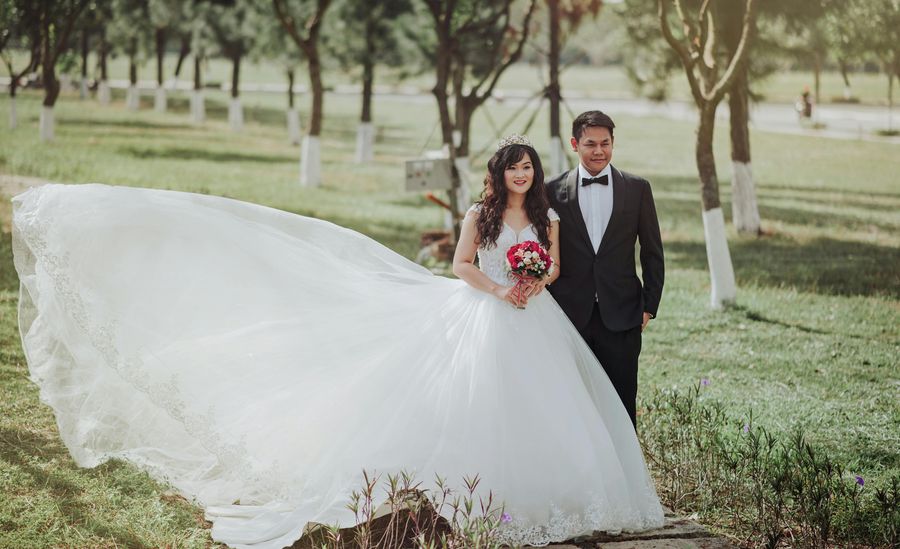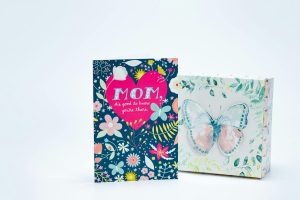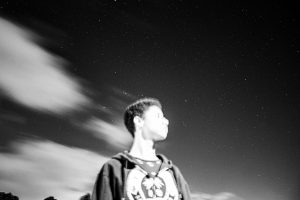Understanding Bisexuality and Debunking Bisexual Stereotypes
Hey there! Have you ever heard someone say that bisexuality is just a phase, or that bisexual people are greedy and selfish? Maybe you’ve heard that bisexuals don’t exist, or that they’re more likely to cheat on their partners.
Unfortunately, these are all common stereotypes about bisexual people, and they couldn’t be further from the truth.
So, let’s set the record straight.
Bisexuality is a very real and valid sexual orientation, just like heterosexuality and homosexuality. It describes someone who is attracted to people of both genders.
But it’s important to note that bisexuality is a spectrum, just like all other sexual orientations. It’s not black and white.
There are many different ways to experience attraction, and everyone falls somewhere on that spectrum. Now, let’s debunk some of the most common stereotypes about bisexual people.
Debunking Bisexual Stereotypes
-
Bisexuals are going through a phase:
This is one of the most harmful and dismissive stereotypes about bisexuality. It suggests that being attracted to people of both genders is not a real and valid sexuality, but rather a confusion or experiment.
But bisexuality is not a phase. Many people know that they’re bisexual from a very young age, just like many people know they’re straight or gay from a young age.
It’s not a phase, it’s a fundamental part of who they are.
-
Bisexuals are greedy and selfish:
Another common stereotype is that bisexual people are inherently more selfish and greedy than other people.
This couldn’t be further from the truth. Attraction doesn’t work on a supply and demand model.
Just because someone is attracted to more than one gender doesn’t mean they want or need more partners. Bisexual people are just as capable of having healthy, monogamous relationships as anyone else.
-
Bisexuals don’t exist:
Some people believe that bisexuality isn’t real, or that it’s just a cover for being gay or straight. But this simply isn’t true.
Bisexuality is a very real and valid sexual orientation, and it’s important to recognize and accept it.
-
Bisexuality spreads STIs:
This stereotype is not only false, but it’s also harmful.
It suggests that bisexual people are somehow responsible for spreading sexually transmitted infections (STIs), which is simply not true. All sexually active people, regardless of their orientation, should practice safe sex and use protection to prevent the spread of STIs.
-
Bisexuals are cheaters:
This stereotype is harmful and reinforces the idea that bisexual people are inherently unfaithful.
But just like anyone else, bisexuality has nothing to do with cheating. Attraction to multiple genders doesn’t make someone more likely to cheat, and it’s important to recognize and reject this harmful stereotype.
-
Bisexuals are polyamorous:
While some bisexual people are part of polyamorous relationships, this stereotype suggests that all bisexual people are polyamorous, which simply isn’t true. Being attracted to multiple genders doesn’t automatically mean that someone wants to have multiple partners.
Just like anyone else, bisexual people can have a variety of relationship structures, from monogamy to polyamory.
-
The bisexual community is small:
While it’s true that bisexual people often face a lack of acceptance and understanding from both the straight and gay communities, this stereotype suggests that there aren’t very many bisexual people out there.
In reality, a significant portion of the LGBTQ+ community identifies as bisexual, and it’s important to recognize and support this community.
-
Bisexuals are commitment-phobes:
It’s a common stereotype that bisexual people are commitment phobic, or that they’re unable to form long-term relationships.
But just like anyone else, bisexuality has nothing to do with commitment. People from all sexual orientations have had different experiences that can affect their willingness to participate in long-term relationships.
-
A bisexual is confused:
Another stereotype around bisexuality is that it’s a result of being confused or unsure of one’s sexuality. However, attraction to more than one gender is completely valid and should be respected as such.
It’s important to remember that everyone has their own journey and exploration of their own sexuality.
-
All women are bisexual:
This stereotype is not only untrue but highly problematic.
This idea has been constructed by a society that sexualizes women as objects of desire. It constantly suggests that the sole purpose of a woman’s existence is to please men and other people who are attracted to women.
It is important to respect anyone who accurately identifies their own sexual orientation, instead of pigeonholing people into preconceived stereotypes.
-
All they want are threesomes:
This is yet another harmful stereotype that serves to fetishize bisexuality, essentially reducing a serious sexual identity to nothing more than a fantasy in someone else’s imagination.
While some bisexual people may enjoy threesomes, this is not something that can be assumed of an entire population of individuals based on their sexual orientation.
Bisexual people, like all people, are complex and diverse individuals.
Understanding and accepting the spectrum of sexual orientations is important for creating a more inclusive world. While there are harmful stereotypes and misconceptions about bisexuality, with increased awareness and acceptance, we can break down these harmful narratives.
Remember to keep an open mind and continue to learn about and support the entire LGBTQ+ community.
Bisexual Identity: Understanding and Navigating
Bisexuality is a spectrum of attraction towards more than one gender that is often overlooked or invalidated within the LGBTQ+ community.
Many bisexual people struggle with identity and face unique challenges as they navigate the world around them. In this article, we’ll dive deep into the experiences of bisexuals, exploring the challenges they face, and ways in which they can live their lives authentically.
Understanding Bisexual Identity
Bisexual identity is often misunderstood or invalidated in the larger society, as well as within the LGBTQ+ community. Bisexuality is a valid sexual orientation, and it is crucial for those who identify as such to understand that their attraction towards more than one gender is a fundamental aspect of their identity.
Sometimes, bisexual identity comprises romantic orientation as well. While attraction pertains to sexuality, romantic orientation speaks to a person’s romantic preferences.
For example, a bisexual person may be romantically interested in people of one gender, but physically attracted to individuals of another gender. Its important to recognize that individuals who identify as bisexual may navigate the complexities of their sexual and romantic attractions differently, resulting in a vast range of experiences.
Navigating Bisexual Identity
Bisexuality doesn’t exist in a vacuum; individuals who identify as such must navigate a world that may require coming out, relationships, and self-acceptance challenges. Here are a few topics to consider:
Biphobia
Biphobia is discrimination and prejudice against individuals who identify as bisexual.
Biphobia can be perpetuated by the larger society, as well as within the LGBTQ+ community, leading to invalidation and erasure of bisexuality.
It can be exhausting and challenging to be constantly challenged for your identity. Calling out biphobic comments or actions can help bring awareness and change, but it’s important to take care of oneself in these situations.
Coming Out
Coming out is a personal process that can be liberating but can also have significant consequences. Coming out as bisexual to family, friends, and loved ones often requires explaining what bisexuality means and correcting misconceptions.
It can be challenging to come out, so it’s important to assess one’s safety and have a support system in place. Coming out is a personal decision, so no one should feel pressured to come out until they feel comfortable doing so.
Relationships
When in a relationship, the disclosure of one’s bisexuality can be a sensitive topic, often leading to emotional struggles. Partnerships involve mutual trust and respect, and communication is critical to maintaining intimacy and security in a relationship.
Its essential to find partners who are supportive and genuinely interested in the person one is, including one’s sexuality.
Self-Acceptance
Self-acceptance is an essential component of living authentically. One’s sexuality is one aspect of their identity, and embracing it paves the way for a fulfilling life.
Just as everyone has the right to exist and experience the world in their own way, so do individuals identifying as bisexual. Its essential to recognize and validate one’s attractions and feelings, allowing oneself room to explore and grow.
Intersectionality within Bisexuality: Embracing Diverse Identities
Sometimes, being biracial, genderqueer, or having disabilities can impact the perception and navigation of bisexuality. Intersectionality refers to the unique experience of multiple identities and the ways in which they intersect to shape one’s experiences.
Here are some intersections to consider:
Race and Ethnicity
The intersection of race and bisexuality can be complex, and people of different ethnic and cultural backgrounds may encounter stereotypes and assumptions when navigating their sexuality. It is essential to find resources and support groups where individuals with similar backgrounds can acknowledge and validate each other’s unique experiences and work together to create a more accepting and diverse community.
Gender Identity
The intersection of gender identity and bisexuality is notable, especially when considering the wide range of experiences among the non-binary, genderqueer, and transgender communities within the bisexuality spectrum. Bisexual people who do not identify as male or female, for example, face additional invalidation and might feel as if they must choose between homosexual and heterosexual identities.
It’s important to acknowledge that bisexuality in non-binary or genderqueer individuals is valid and is as important to acknowledge as issues pertaining to lesbian, gay, and straight identities.
Disability
The intersection of disability and bisexuality can be challenging, requiring sensitivity from partners and accommodations from the larger LGBTQ+ community. Accessibility plays a crucial role in creating an inclusive and diverse community, and addressing issues such as ableism and finding ways to accommodate those with disabilities can help that community thrive.
Religion and Spirituality
The intersection of religion and bisexuality can create conflict within individuals, especially for those coming from conservative religious backgrounds that are not accepting of LGBTQ+ identities. Conversely, faith and spirituality can also provide support and validation for those who identify as bisexual, creating a sense of community and connection within a larger group.
Final Thoughts
Bisexuality is a valid sexual orientation that deserves recognition and acceptance in our society. Embracing and acknowledging intersectionality in bisexuality is crucial to creating an inclusive and diverse community that meets the unique needs and challenges of individuals.
Its important to recognize and support members of the LGBTQ+ community who identify as bisexual, and do our part to acknowledge and reject harmful stereotypes premised around bisexuality, which perpetuate harmful myths and create a stigmatizing environment for people who identify as bisexual.
Bisexual Representation: The Importance of Visibility and Inclusivity
Representation matters, and it’s essential for members of the LGBTQ+ community to see themselves reflected accurately in society, media, art, and history.
Bisexuality has often been overlooked and misrepresented in the media and excluded in society, leading to a lack of understanding and awareness of it. However, the rise of diversity and inclusion initiatives in recent years has pushed for the representation of bisexuality and created a space to hold more conversations around it.
Bisexual Representation in Media: Moving from Stereotypes to Positive Representation
Representation of bisexuality in the media often played into harmful stereotypes, portraying bisexual individuals as greedy, confused, or untrustworthy. Bisexual narratives have been often misrepresented, and individuals have lacked positive and affirming representation of their experience.
Fortunately, some shows have saved the day and are working towards changing the narrative around bisexuality, including Netflix’s hit “Sex Education” and the series “Brooklyn Nine-Nine,” both of which feature bisexual characters with positive representation.
Positive representation for the bisexual community in media would result in a greater understanding of bisexuality for both members of the LGBTQ+ community and for the greater population.
It’s time to create a world where individuals can see themselves in media, and not as harmful stereotypes or misrepresented against media narratives.
Bisexual Representation in Society: Education, Advocacy, Acceptance, and Allyship
Bisexual individuals face significant barriers to acceptance in society, even within the LGBTQ+ community.
Bisexuality suffers from erasure, discrimination, and invalidation, leading to harmful misconceptions around it. Advocacy and allyship can play a crucial role in advocating for bisexual representation in society.
Education and awareness of bisexual issues can help reduce this misunderstanding and create safe spaces for bisexual individuals within the community. Its essential for society to recognize and support the bisexual community’s narratives, bearing in mind the unique experiences and challenges that come with bisexuality.
Bisexual Representation in Art and Literature: Expression, Creativity, Identity
Art and literature have always been vital platforms for self-expression, and bisexuality is no exception to the rule. Bisexual artists and writers have been able to express their identities and experiences through their work, helping to bring representation and recognition to the bisexual community.
Recent works such as “The Bi-ble” by Lauren Parker, a compilation of stories, and The Bi-annual, a quarterly literary journal dedicated to bisexuality, are examples of the expansion of bisexual representation.
Bisexual Representation in History: Erasure, Activism, Achievements, and Pioneers
Bisexual persons have made a historic impact in a variety of industries and have contributed in changing society’s view around sexuality.
However, there is a significant history of bisexuality being erased, with many important personalities and events glossed over or erased from history. Recent activism and advocacy efforts have sought to bring this history to light, and to celebrate bisexual pioneers and achievements at the forefront of social justice.
Final Thoughts
Bisexuality is a valid sexual orientation, and it’s essential to recognize and validate it in society, media, art, literature, and history. Bisexual representation plays a significant role in creating an environment where individuals feel seen, heard, and accepted.
At the same time, it



